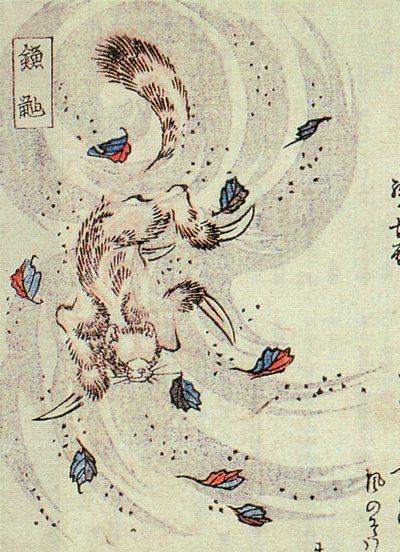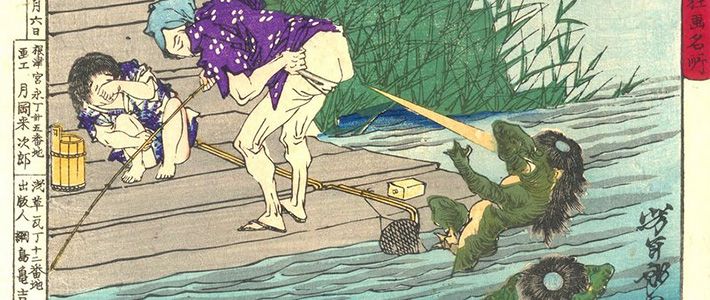
Five Ghosts and Goblins
Culture- English
- 日本語
- 简体字
- 繁體字
- Français
- Español
- العربية
- Русский
From yōkai (paranormal beings) to yūrei (ghosts), Japan’s folktales, kabuki, yūrei-ga ghost art, and modern-day horror manga and movies are jam-packed with a monstrous myriad of spooks, sprites, and spirits—some benign, and some so eerie as to chill the blood. Although it is this potential of ghost stories as a (super-) natural coolant that makes them such popular entertainment in the sticky summer months, there is a yōkai for almost every season and occasion. Here are five to get you started on your own "yōkai watch."
Nuppeppō
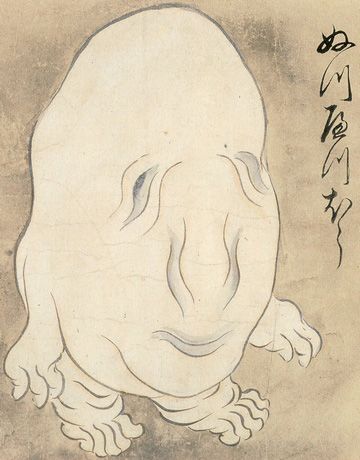 Nuppeppō, Sawaki Sūshin (1707–72)
Nuppeppō, Sawaki Sūshin (1707–72)
A blob-like, gelatinous yōkai that can sometimes be found walking the streets after dark. If you look closely, there seems to be the vaguest outline of a face drooping within the flabby folds of its body. The nuppeppō, also known as nuppefuhofu and nutsuhetsuhō (the confusion probably stems from the tongue-twisting nature of the correct name, whichever that may be), is said once to have appeared to the shōgun Tokugawa Ieyasu (1543–1616), who reported an odor akin to rotting meat. There are tales that eating the flesh of a nuppeppō will confer eternal life, but good luck catching one—despite their stubby limbs, they are reportedly extremely fast.
Kappa
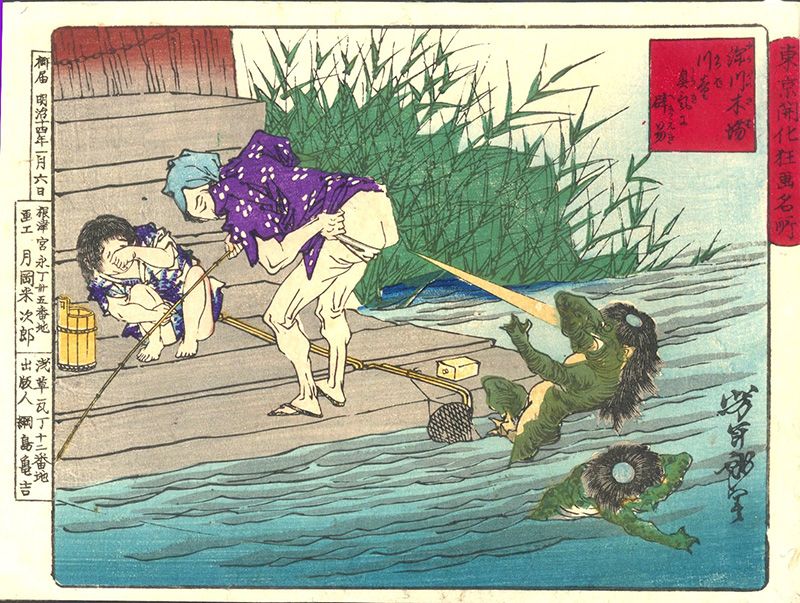 Kappa, Tsukioka Yoshitoshi (1839–92)
Kappa, Tsukioka Yoshitoshi (1839–92)
Kappa are water-dwelling yōkai that appear in tales from all over Japan. Their behavior can range from the merely mischievous to downright terrifying acts such as drinking human blood, eating babies, and dragging people and livestock into rivers to drown them. Never fear, though! If you should happen to meet a kappa while taking a stroll along one of Japan's many waterways, there are several methods of escape. One is to bow—despite their sometimes fiendish side, kappa are famously polite and will certainly return the greeting, only to see the strength-giving water in the dish upon their head spill out, rendering them powerless. Another way is to make offerings of food, with cucumbers being a particular favorite (hence the cucumber sushi roll's Japanese name, kappamaki). Or you could just do the same as the young scamps in the picture.
Akaname
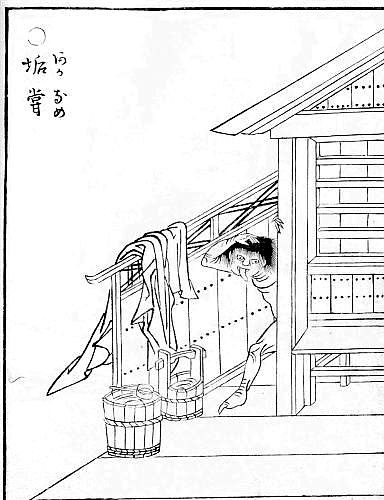 Akaname, Toriyama Sekien (1712–88)
Akaname, Toriyama Sekien (1712–88)
Literally “filth licker,” this goblinlike creature lurks in the bathroom, where it uses its long, prehensile tongue to lap up accumulated scum in the dead of night. In a probable play on the aka part of the name, this yōkai is often described as being red from head to toe. While some suggest the akaname is the fear of nighttime visits to the toilet given flesh, others argue that there is a trend for the use of such harmless yōkai in instructive or educational tales—in this case a reminder of the importance of scrubbing the bathroom.
Aonyōbō
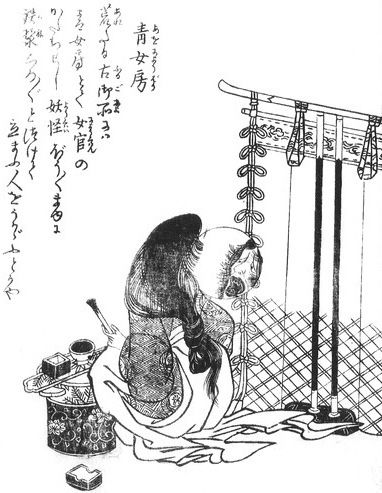 Aonyōbō, Toriyama Sekien (1712–88)
Aonyōbō, Toriyama Sekien (1712–88)
Most of us probably don’t make a habit of snooping around in old, abandoned buildings in remote locations. But if you did so, perhaps in search of shelter on a stormy night, you might find this female yōkai, sitting with her back to the door. Dressed in tattered finery, the aonyōbō spends all eternity clasping a mirror, frantically applying and re-applying her makeup, as if in anticipation of a guest or lover who has never arrived. Get close enough to glimpse her face and you will see a harrowing visage with a gaping maw full of black teeth. These pitiable beings, whose name comes from the low-status maidens of medieval Japanese courts, have been driven insane by centuries of futile efforts to look their best.
Kamaitachi
Have you ever suddenly realized you have a cut somewhere on your person, which seems to have been bleeding for some time, but can’t for the life of you figure out how the wound occurred? Chances are that you had just had an encounter with a kamaitachi (literally “sickle weasel”). This small, mammal-like yōkai rides on the wind, slicing at the flesh of mortals with its bladed limbs. While usually invisible, a kamaitachi will sometimes manifest itself as a swirling dust devil or the biting gales that strafe the frigid northern regions of Japan. Straining your ears into the gusts, you may even be able to hear its feral, screeching battle cry.
(Originally published on our Facebook page. If you liked it here, why not go and like us there?)
